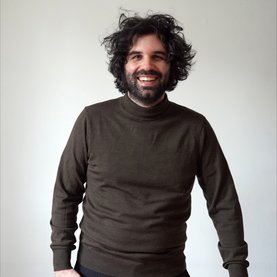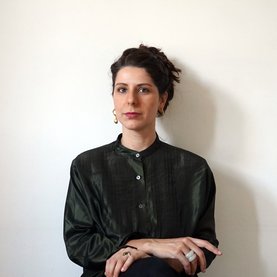ADS7: En Route
“Route” is simultaneously a verb and a noun: it indicates a way or course taken in getting from a starting point to a destination, but also the act of directing someone along that specific course. A “route” imbues a space with directionality and physical movement. For ADS7, architecture lies exactly there, between place(s) and action(s).
“The truth is, of course, that there is no journey. We are arriving and departing all at the same time.”
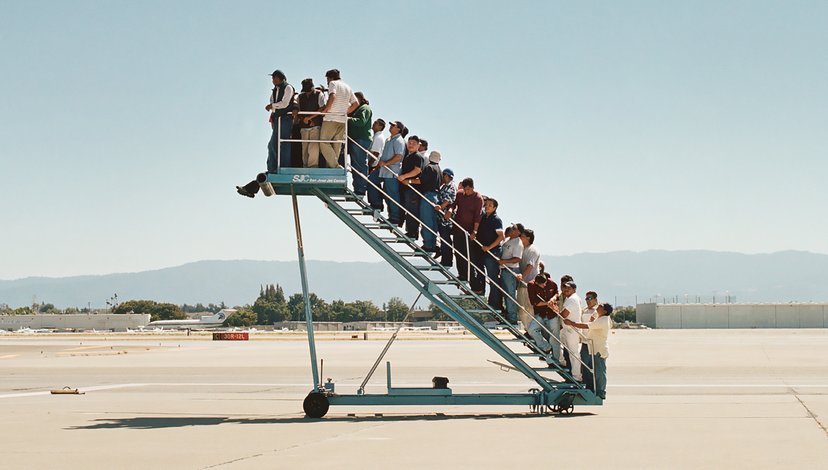
Still from “Centro di permanenza temporanea” (Temporary Detention Centre): offering a commentary on both our need for “incessant mobility”, as well as the absurdly dubbed Italian detention centres for illegal immigrants and refugees, the work is a reflection on “the contradictory state of being permanently temporary” - film by Adrian Paci, 2007
Studio Tutors: Lemonot – Sabrina Morreale & Lorenzo Perri
A “route” imbues a space with directionality and physical movement. For ADS7, architecture lies exactly there, between place(s) and action(s): in 2025/26 we’ll be en route, identifying trajectories, creating paths, and ultimately building spatial sequences along them. We’re interested in both the architecture of journeys and in the physical architecture(s) that unfolds along these journeys. The studio is therefore committed to questioning the evolving interdependencies between multiple actors—humans, other than humans, and architectural props.
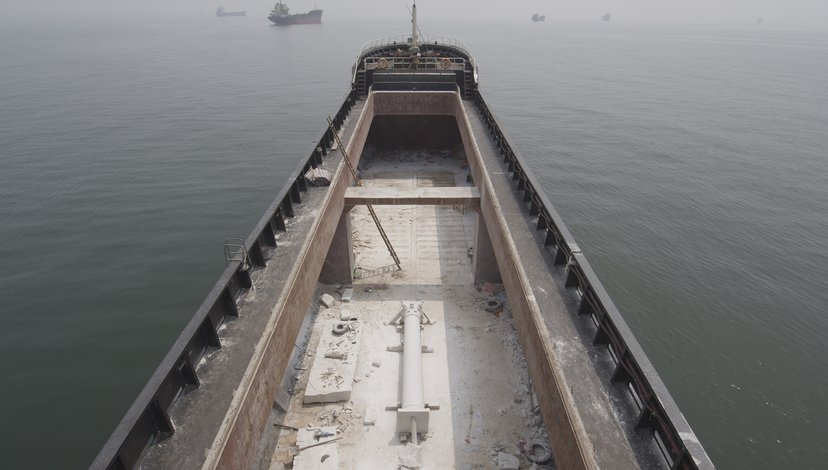
Still from “The Column” - film by Adrian Paci, 2013
Along their chosen routes, students will therefore identify and challenge the convivial dynamics between humans, other than humans, and architectural props, focusing on how they mutually determine each other. ADS7 continues to replace “interaction” with “intra-action”—a term coined by Karen Barad to frame agency not as an inherent property of an individual, but as a dynamic force in which all designated “things” are constantly exchanging and diffracting, influencing and working inseparably.
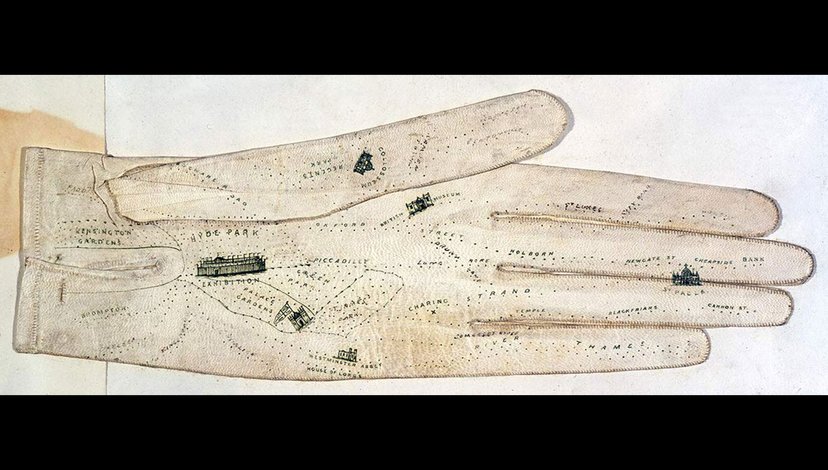
The landmarks of Victorian London painted onto a glove - designed by George Shove for the London’s Great Exhibition in Hyde Park, 1851
Journeys often prompt perceptual overlaps: when in motion, everything might seem slower or faster than usual, suddenly collapsed or weirdly dilated, cyclical or never-ending. Our aim is to capture how the perception of time affects our experience of space. The project of the studio is therefore to spatialise temporal thresholds, considering them to be peaks of intensity, when privileged convivial encounters can happen. Once en route, how can we build documents that grasp – and therefore determine – the spatiality of rhythm, duration, and peculiar time sequences?
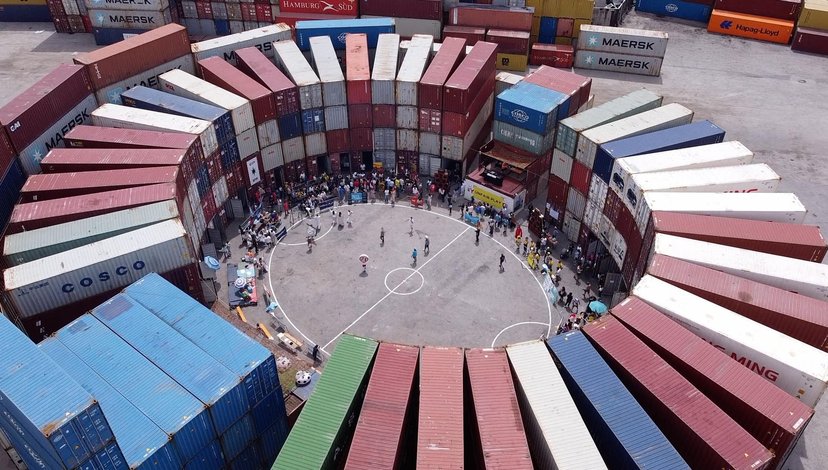
“Coppa Pizzeria”: a football match inside a colosseum made of containers within the port of Naples - designed by Daniele Sigalot, 2025
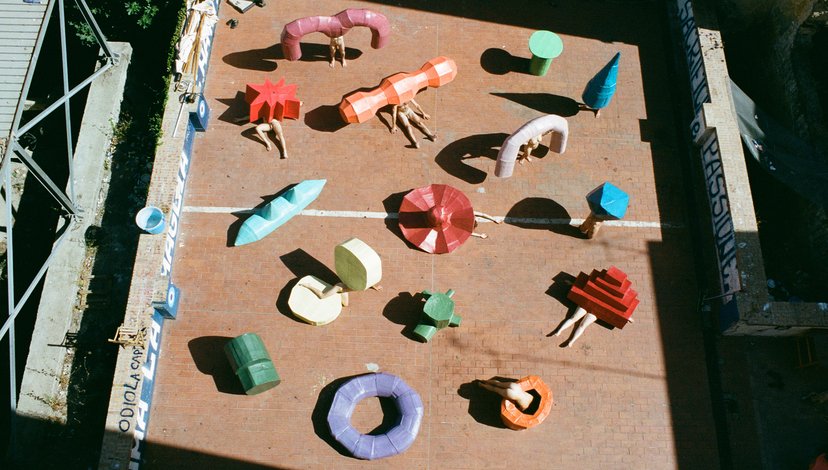
“Why can’t we live together?” performance at L’Asilo (Naples) by Claudio La Mattina and Matteo Bozzi - part of his project in ADS7: Convivial-ism, 2022/2023
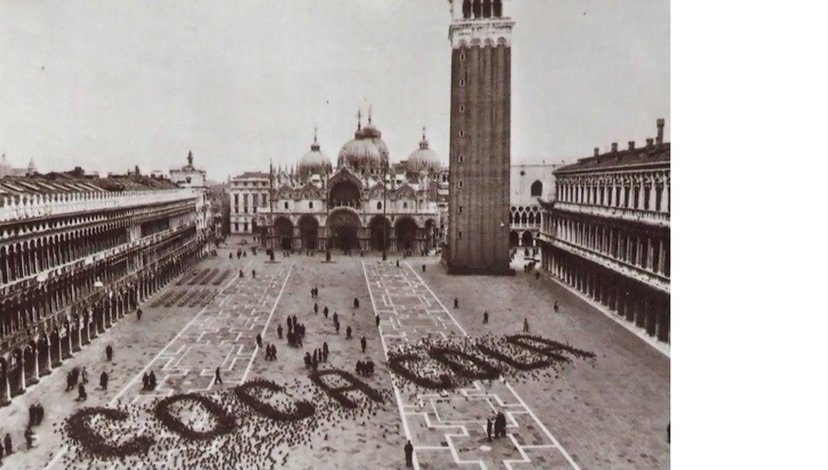
Advertising campaign made by spreading grains for pigeons in Piazza San Marco, Venice - designed by Coca-Cola, 1960
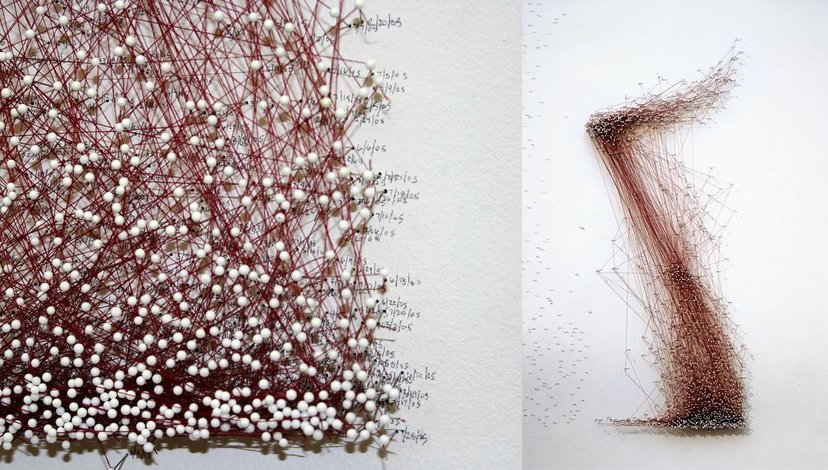
“201 Days”: a layering of sensations, an abstract map of the human body. The visual space of the work is made of dated pinholes that indicate sense events, while synchronisms are indicated by red strings. Seen from above, the result is a record of spatial densities; from the side, a stratigraphy of moments - mixed-media drawing (pins, pencil, threads) by Katie Lewis, 2007
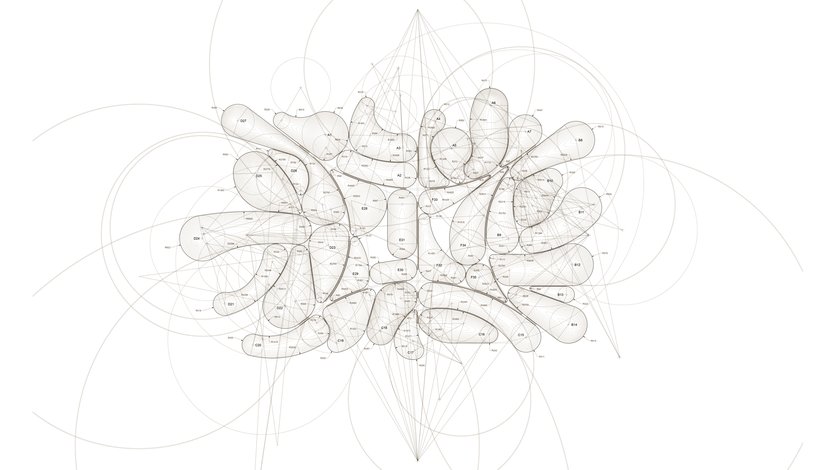
“Talamo”, geometrical plan of a performative landscape, constantly moving between floor and ceiling. It’s a 70 sqm mattress, made of 35 interlocked soft pillows, precisely conceived and constructed, yet meant to be distorted, shaped by the force of gravity and the interactions with multiple bodies - project by Lemonot for BASE Milano, 2024
“Talamo”, boundaries between inanimate matter and human bodies: arisandmartha’s rehearsals, filmed by 7:37pm - project by Lemonot for BASE Milano, 2024
ADS7 is fundamentally interested in architecture as a form of action. Being on site is crucial to our design methodology: research translates into proposals through physical acts on site that often originate in social or communal acts. We operate through mixed-media artefacts (performances, drawings, models, and films) that the audience has to bodily engage with. Fiction is deployed to challenge reality, combining rigour with inventiveness, trying to restore confidence in design as a precious tool of discovery and as an instrument to enable new formats of expression, creation and mediation.
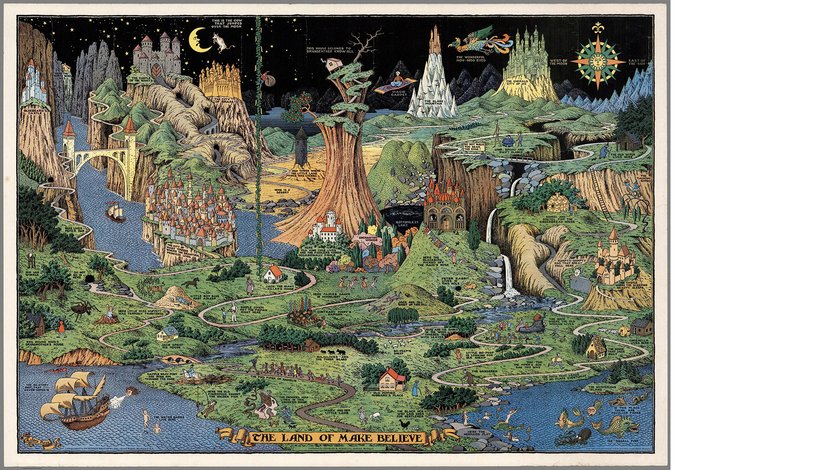
“The Land of Make Believe”: a whimsical map depicting a fantastical world populated by over fifty characters and places from nursery rhymes, fairy tales and children’s stories. The map emerged at the height of the Great Depression and offered much needed escapism and wonder - designed by Jaro Hess, 1933
In Term 1, students will be asked to build their routes. The primary output will be a series of cartographies of time – composite tapestries that put temporal and spatial features in dialogue. Year 1 students will begin consolidating their maps into specific spatial proposals, while Year 2 students will continue by initiating and documenting convivial encounters on site. In the following terms, we will work with large-scale, immersive “inhabitable” drawings, where lines are activated with three-dimensional supports or choreographed with heterogeneous filmic pieces.
Final projects will be developed from performative components assembled at the scale of the human body and tested against the conditions of real convivial settings – aiming to produce novel 1:1 experiences beyond the confines of the university.
“The Crawler”: performative device from “Periferico: the London’s orbital and its body of relationships” - Kevin Adorni’s project in ADS7: Being With-In, 2023/24
Live Project/Field Trip: In February 2026, ADS7 will travel to Thailand, in collaboration with Khao Yai Art, hosted by the Bangkok Kunsthalle and the Khao Yai Art Forest. The Live Project will focus on the relations and the journey between these two venues, both part of the same institution, experimenting with various approaches to site-specificity in relation to art, architecture, and the natural environment.
Teaching Day: Tuesday
Tutors
Lemonot is a duo (Sabrina Morreale & Lorenzo Perri) that blends spatial and relational practices. They operate between architecture and performative arts, using them as tools to detect, celebrate and trigger the spontaneous theatre of everyday life. Through a wide range of media – pavilions, exhibitions, public stage-sets, inhabitable costumes and short films – they aim to construct the supporting spatial structures for things to happen.
They have taught together throughout Europe, in Latin America and at INDA in Bangkok. Their projects have been exhibited and awarded internationally: among others, at the Young Talent Architecture Award 2016, at the ATT19 Gallery in Bangkok, at the RIBA, at Vienna Design Week, at Mextropoli 2021 in Mexico City, at Milan Design Week and the Architecture Festival of Rome 2022.
Sabrina Morreale graduated from the Architectural Association and she’s currently a Studio Master at the AA Foundation in London.
Lorenzo Perri received a diploma with honours from the Architectural Association and he’s currently teaching at the University of Applied Arts in Vienna.
